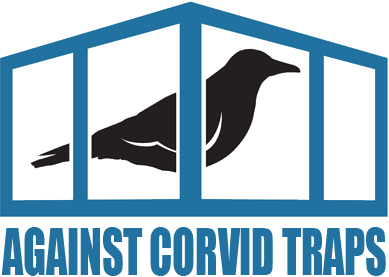We wanted to know what is the situation regarding cutting flight feathers on crows being used as decoy birds. Also, a Larsen manufacturer provides only a 10 inch metal shelter for the decoy. Should the person setting the trap not provide more shelter?
Reply from Ian Dillon, Natural England:
General Licences are issued by Natural England under the Wildlife and Countryside Act 1981 (as amended) and with each licence there are a number of conditions that must be complied with. For the trapping of corvids using Larsen traps, or similar, these are listed under the Standard Licence Conditions for trapping wild birds using decoys under a Natural England licence.
The relevant sections regarding cutting flight feathers and providing shelter are found under: Section 7 Treatment of decoy birds which states ‘Decoy birds are not to be winged clipped because if they escape or are released from the trap then they would be highly susceptible to predation or to attacks by territorial birds.’
Section 9 Definitions which states “Appropriate shelter” decoy birds are to be provided with shelter that provides effective protection from rain and direct sunlight under the prevailing and anticipated weather conditions. For this reason, transparent Perspex is not considered suitable. What is appropriate will be influenced by the location of the trap and its exposure to the elements. As such, it may be necessary to take advantage of natural cover to provide additional protection. The shelter provided must be sufficient for the total number of decoy birds present in any trap.
The Animal Welfare Act 2006 also applies to trapping corvids and a Natural England Wildlife Management Advice Note.
It is also worth noting that BASC have provided advice on the use of General Licences and trapping corvids which may be of interest to you.
While Natural England issue the General Licences it is my understanding that the Police have the enforcement power. If you have any concerns regarding the use of a trap under a General Licence and whether it complies with the conditions in that licence then the local Wildlife Liaison Officer should be informed via the non-emergency telephone number 101. Natural England would then assist the Police if requested to do so.
We sought further clarity and received:
However, from the General Licence is it is clear that if temperatures rise and cloud cover
declines then it may be reasonable to expect greater shade provided in warm sunny days
than compared to cooler cloudy days. This could be either physically creating cover or
moving the trap to a more shaded location.
Ian Dillon
Lead Adviser
Natural England Wildlife Licensing Service
All post should be sent to:
Mail Hub
Natural England
County Hall
Spetchley Road
Worcester
WR5 2NP
Contact Number: 020 8720 2176
We have sought advice from police regarding the 101 number, and if a bird is
suffering/ injured badly and neglect has occurred, then you can phone 999
